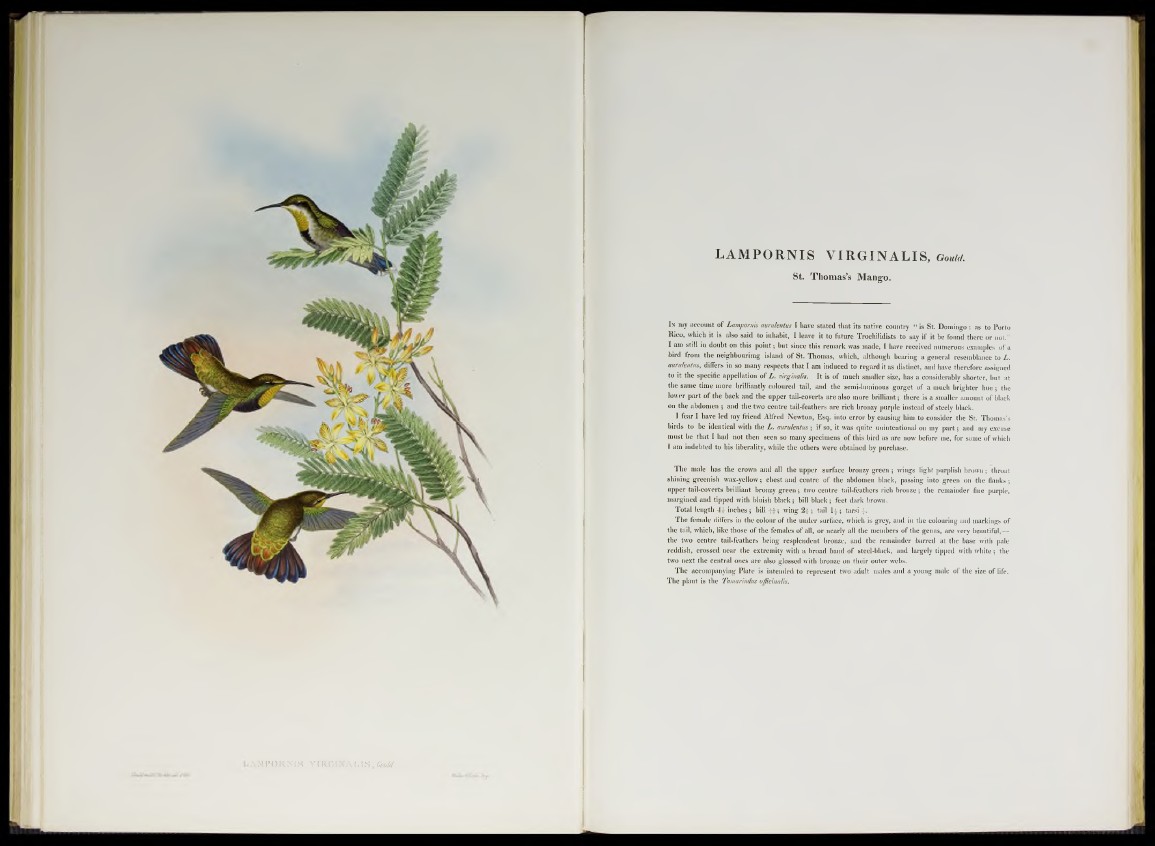
AM P 0 R N 1S V IR G IN A L IS .f ia f ó
LAMPORNIS VIRGINALIS, Gouid.
St. Thomas’s Mango.
I n my account of Lampornis aurulentus I have stated that its native country “ is St. Domingo : as to Porto
Rico, which it is also said to inhabit, I leave it to future Trochilidists to say if it be found there or not.”
I am still in doubt on this point; but since this remark was made, I have received numerous examples of a
bird from the neighbouriing island of St. Thomas, which, although hearing a general resemblance to Zr.
aurulentus, differs in so many respects that I am induced to regard it as distinct, and have therefore assigned
to it the specific appellation of L. virginalis. It is of much smaller size, has a cousiderably shorter, but at
the same time more brilliantly coloured tail, and the semi-luminous gorget of a much brighter hue; the
lower part of the back and the upper tail-coverts are also more brilliant; there is a smaller amount of black
011 the abdomen ; and the two centre tail-feathers are rich bronzy purple instead of steely black.
I fear I have led my friend Alfred Newton, Esq. into error by causing him to consider the St. Thomas’s
birds to be identical with the L. aurulentus; if so, it was quite unintentional on my part; and my excuse
must be that I had not then seen so many specimens of this bird as are now before me, for some of which
I am indebted to his liberality, while the others were obtained by purchase.
The male has the crown and all the upper surface bronzy green; wings light purplish brown; throat
shiniug greenish wax-yellow; chest and centre of the abdomen black, passing into green on the flanks;
upper tail-coverts brilliant bronzy green; two centre tail-feathers rich bronze; the remainder fine purple,
margined and tipped with bluish black; bill black; feet dark brown.
Total length 4-f inches ; bill -ff; wing 2 f ; tail l f ; tarsi f.
The female differs in the colour of the under surface, which is grey, and in the colouring and markings of
the tail, which, like those of the females of all, or nearly all the members of the genus, are very beautiful,—
the two centre tail-feathers being resplendent bronze, and the remainder barred at the base with pale
reddish, crossed near the extremity with a broad band of steel-black, and largely tipped with white; the
two next the central ones are also glossed with bronze on their outer webs.
The accompanying Plate is intended to represent two adult males and a young male of the size of life.
The plant is the Tamarindus officinalis.